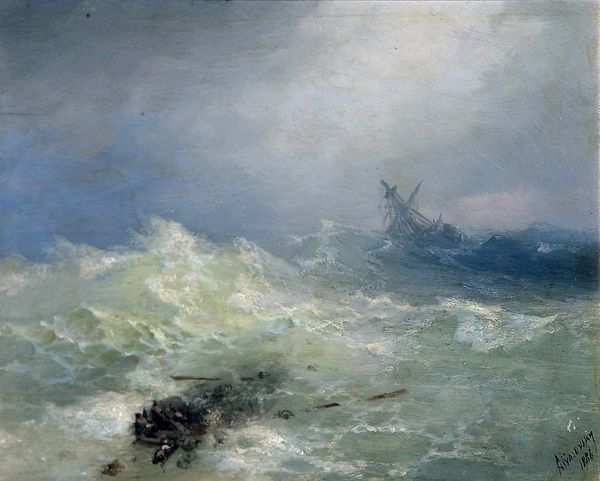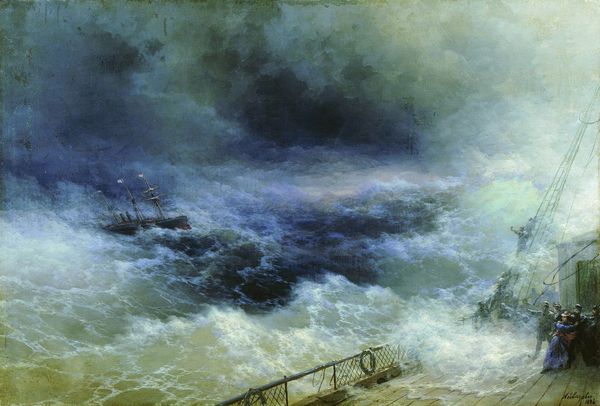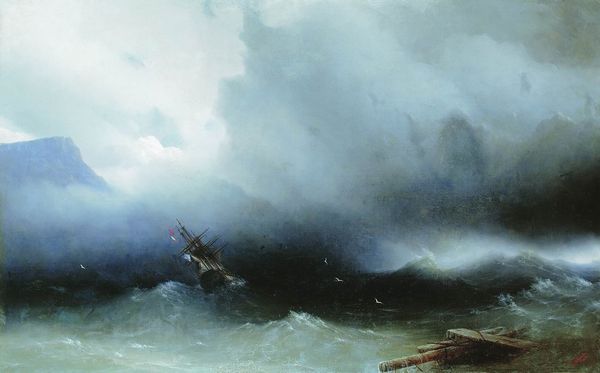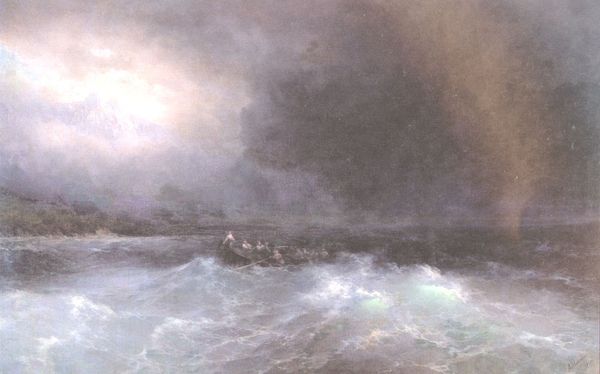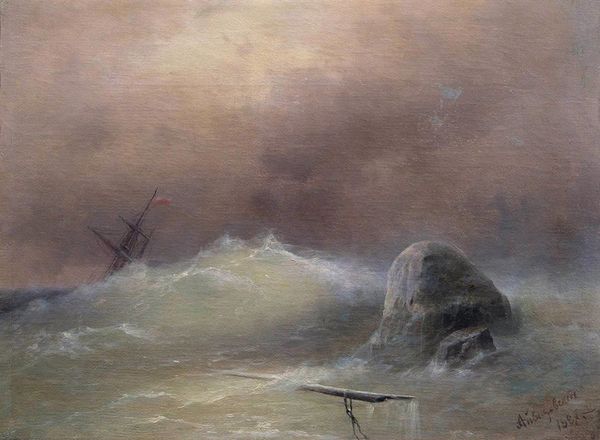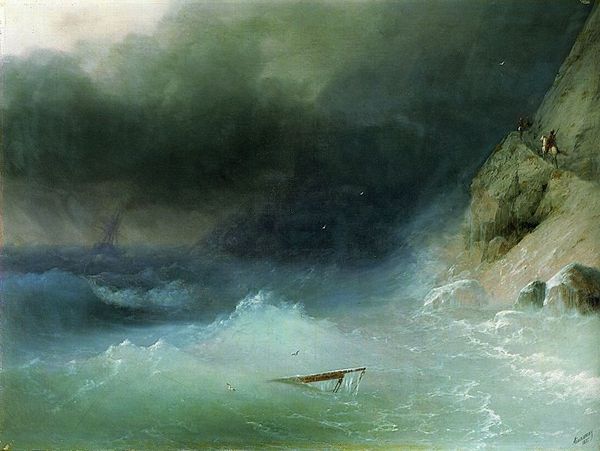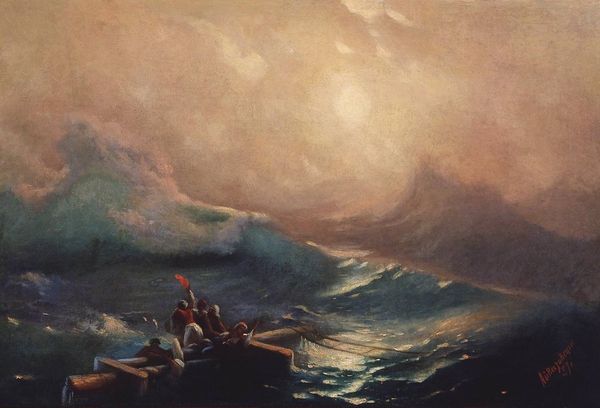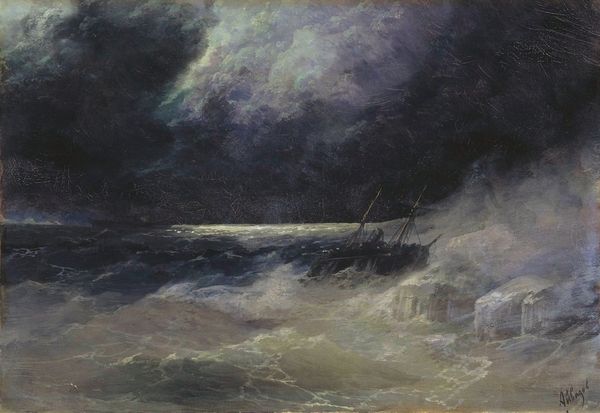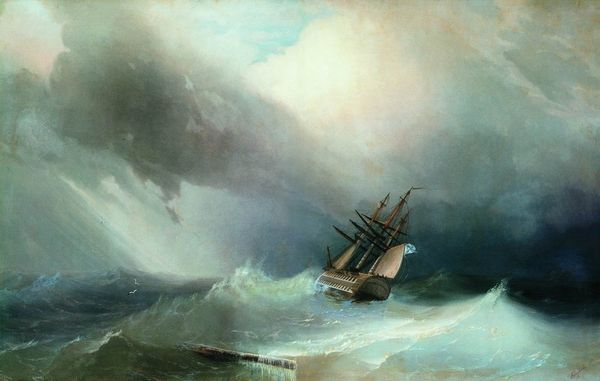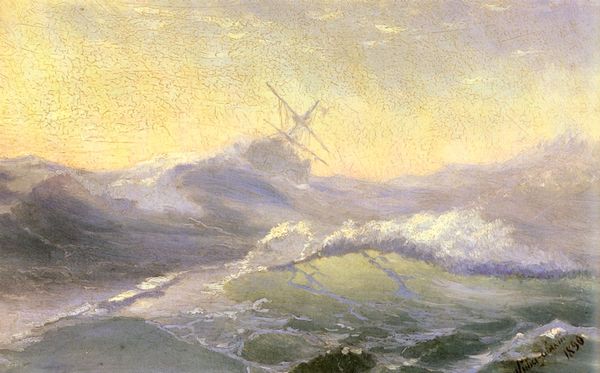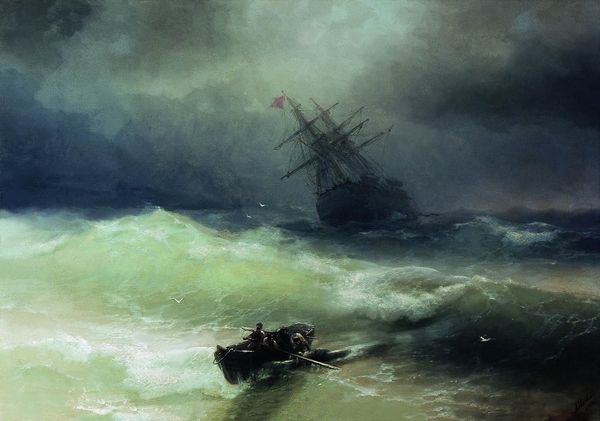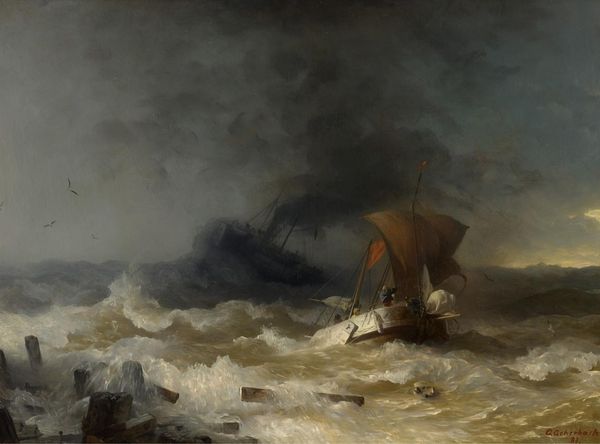
Storm on the Azov Sea in April 1886 1887
0:00
0:00
ivankonstantinovichaivazovsky
Belarusian National Museum of Fine Arts, Minsk, Belarus
Dimensions: 213 x 300 cm
Copyright: Public domain
Editor: So here we have Aivazovsky’s "Storm on the Azov Sea in April 1886," an oil painting completed in 1887. Looking at it, the overwhelming sense of struggle against nature really strikes me. What do you see in this piece? Curator: I see the materiality of survival being brought to the fore. Consider the sailor's labor; battling the Azov Sea demanded physical and mental fortitude. What was the socio-economic position of sailors during this time and what materials would they have had access to? Also consider what does the mass availability of oil paints mean for maritime art's role in representing the real labor of the sea? Editor: That’s a really interesting way to frame it. I hadn't thought about the class implications and how widespread paint availability might change artistic license or realism. Curator: The texture achieved through the application of oil paint contributes significantly to the viewer's engagement, don't you agree? The visible brushstrokes—almost mimicking the churning waves—and how it highlights the sailors toil and precarity under capitalist conditions. Think about the pigments and where they would have come from. Editor: Definitely! The way the light catches certain waves and darkens others, it really emphasizes the volume of the water. Almost making you consider what type of industry uses each pigment at this time... Curator: Precisely. And notice the contrast. Aivazovsky masterfully utilizes light not just for dramatic effect, but to accentuate the fragility of human endeavor. The sheer volume of the painting emphasizes nature's domination in scale. A real testament to human limits within resource extraction. How do you think such scale changed its commercial value? Editor: That’s a great question, and one I hadn’t thought of. So by considering the materiality and the context, we can really start to question its artistic integrity and intent. Curator: Precisely. It really makes you think, doesn't it?
Comments
No comments
Be the first to comment and join the conversation on the ultimate creative platform.
